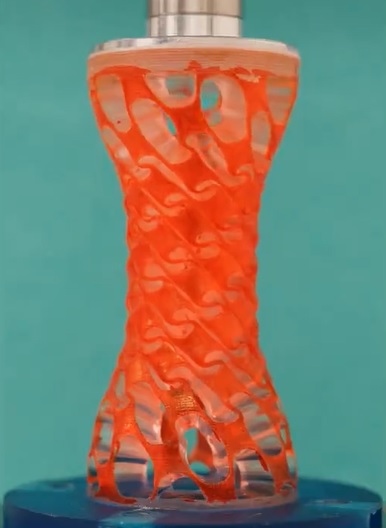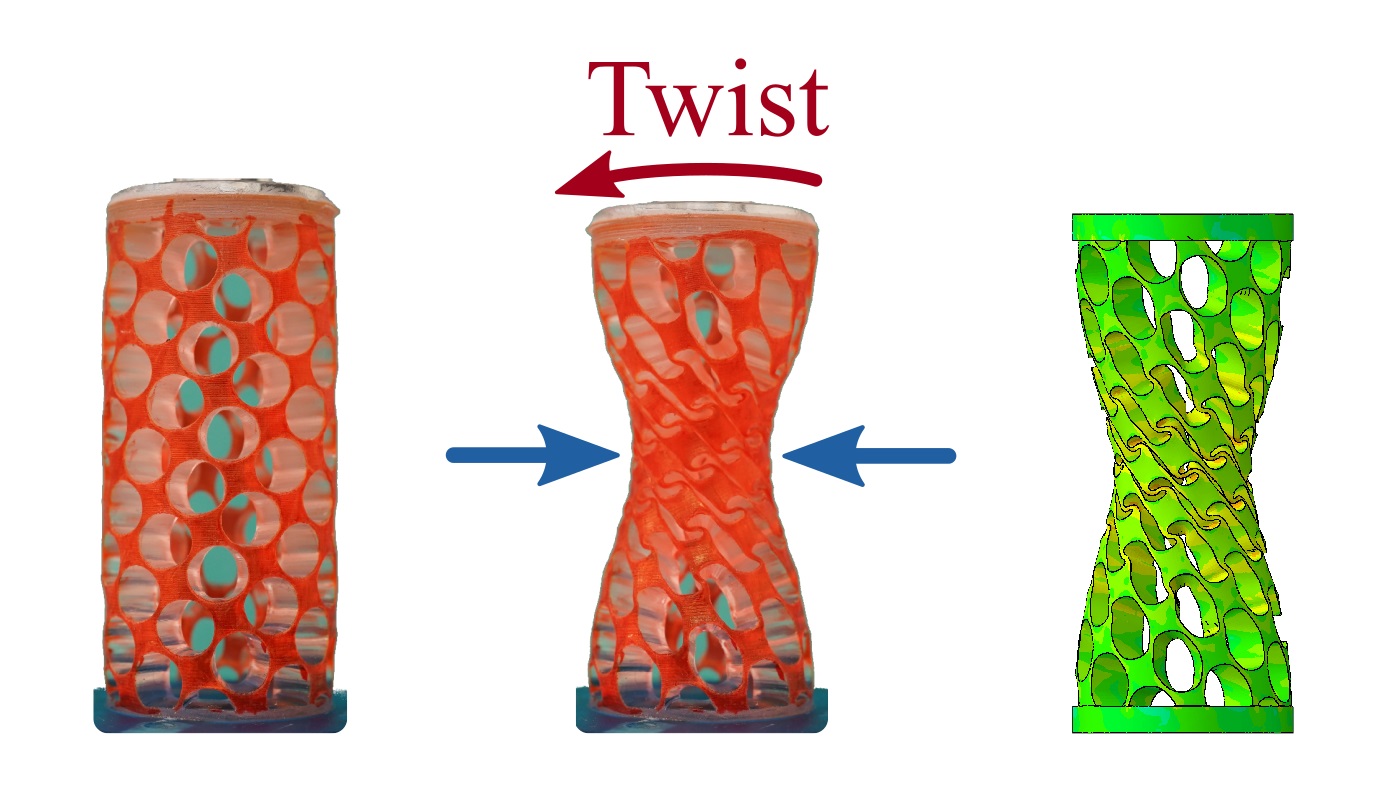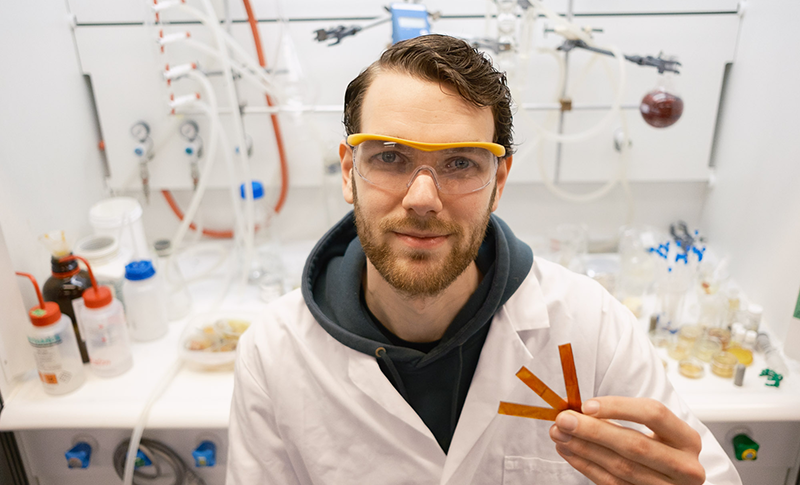Grab an empty Coke can and twist the ends in opposite directions. The can will buckle and become useless. Now, imagine it shrinking to half its size over the entire length of the can. This is possible with the new material developed by Aref Ghorbani. His work was recently published in Nature Communications.
So-called Holey Sheets are the basis of Ghorbani’s discovery. This is a material made from an elastic plate with a lattice of cylindrical openings. It is this structure that makes it special. Ghorbani: ‘If you squeeze rubber in one direction, it bulges to the side in the other directions. That is trivial. But something different and counter-intuitive happens with this material: it doesn’t expand but shrinks.’
Folding
This shrinkage is the result of the material folding within the cylindrical holes in a regular pattern. Hence, the material becomes denser and shrinks. Not much news so far. However, Ghorbani took it one step further and made cylindrical tubes from this material to investigate how they would respond to distortion. This had not yet been done. ‘I focused on twisting because that usually renders materials useless due to buckling.’

When the openings are located diagonally above each other in a spiral pattern rather than neatly lined up in rows, something magical happens when the tube is twisted. This helical tube then radially shrinks along the length without buckling. The shrinkage starts from the centre and grows outwards the top and bottom ends. The shrunk tube is not only smaller but also much stronger.
More stable
This is useful for practical applications. Ghorbani: ‘Twisting makes the cylinder smaller, denser, and more stable, making it more resistant to bending. A liquid in the tube will continue to flow without being cut off. The greater the distortion, the stronger the material becomes. That came as a surprise.’
Constructing a perfect cylinder with these properties is harder than it appears. The spiral of openings must be an exact fit and have the correct angle. This is a matter of mathematics rather than trial and error. Ghorbani then used a 3D printer to build his tubes, which he calls meta-shells.
It all comes down to understanding the ingredients in the design and the properties that result from them
Aref Ghorbani, researcher Physics and Physical Chemistry of Foods
Ghorbani also unravelled the physics behind his meta-shells. This explains why shrinkage only occurs when the material is twisted in the opposite direction of the spiral. Ghorbani: ‘Different shapes have different properties. It all comes down to understanding the ingredients in the design and the properties that result from them. Once you know the rules, you can create properties beyond the reach of conventional materials.’
Syringe
As proof of principle, Ghorbani made a syringe from his magical tube. ‘The shrinking mechanism can be used as a pump’, he clarifies. ‘Twisting results in uniform shrinkage, which you can’t achieve simply through any other method. And, when released, the pump naturally bounces back into its original shape.’




